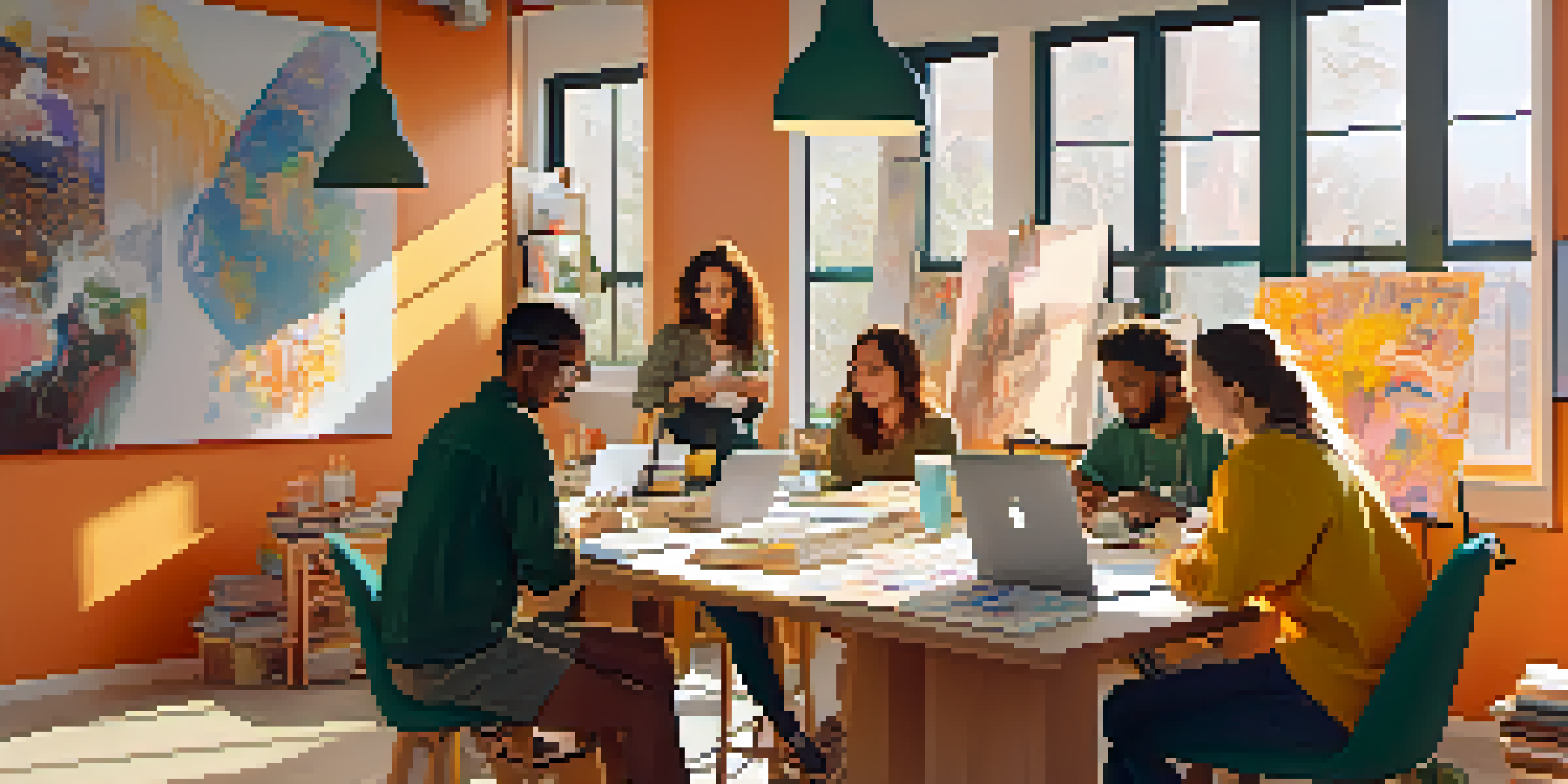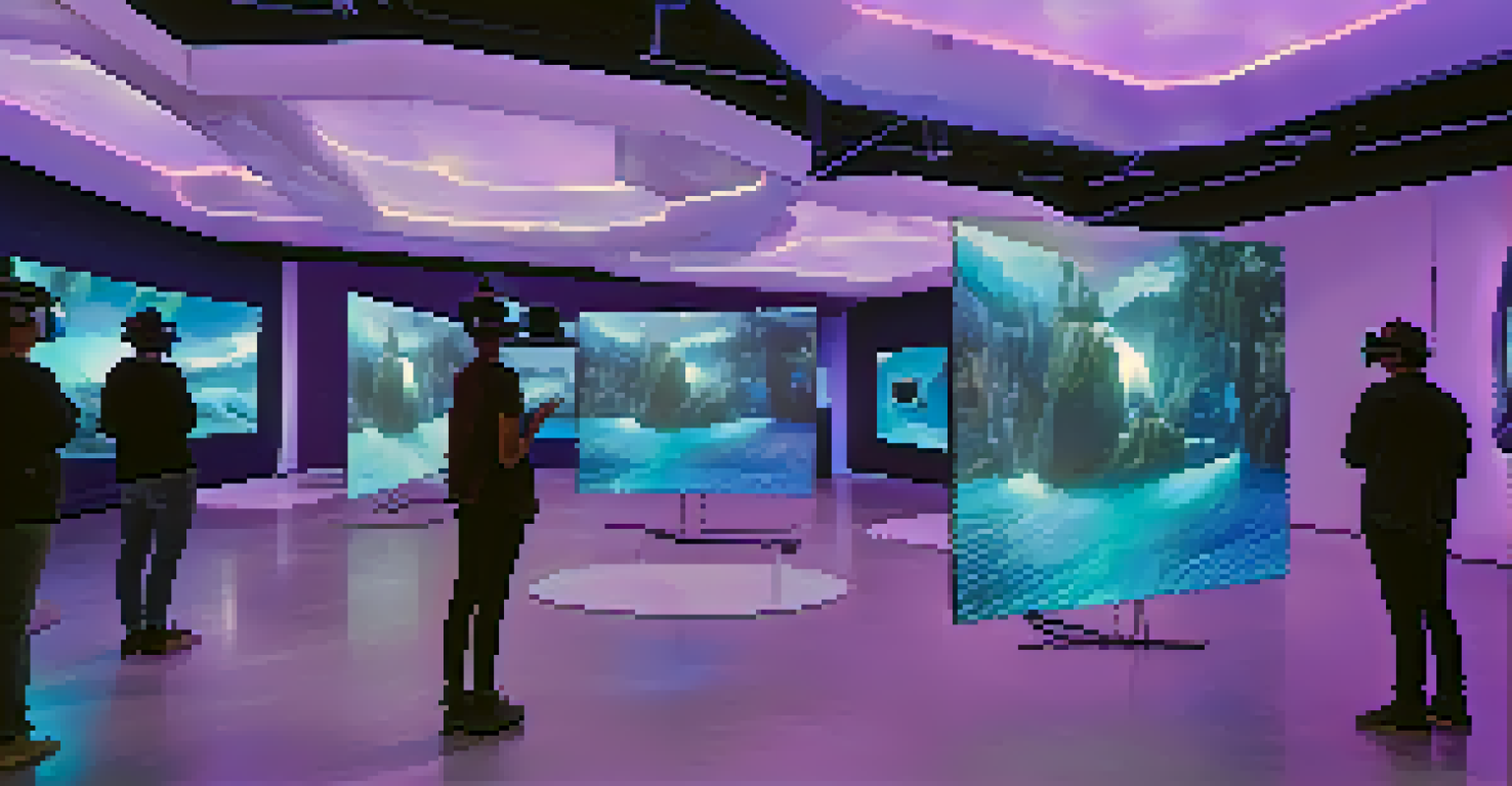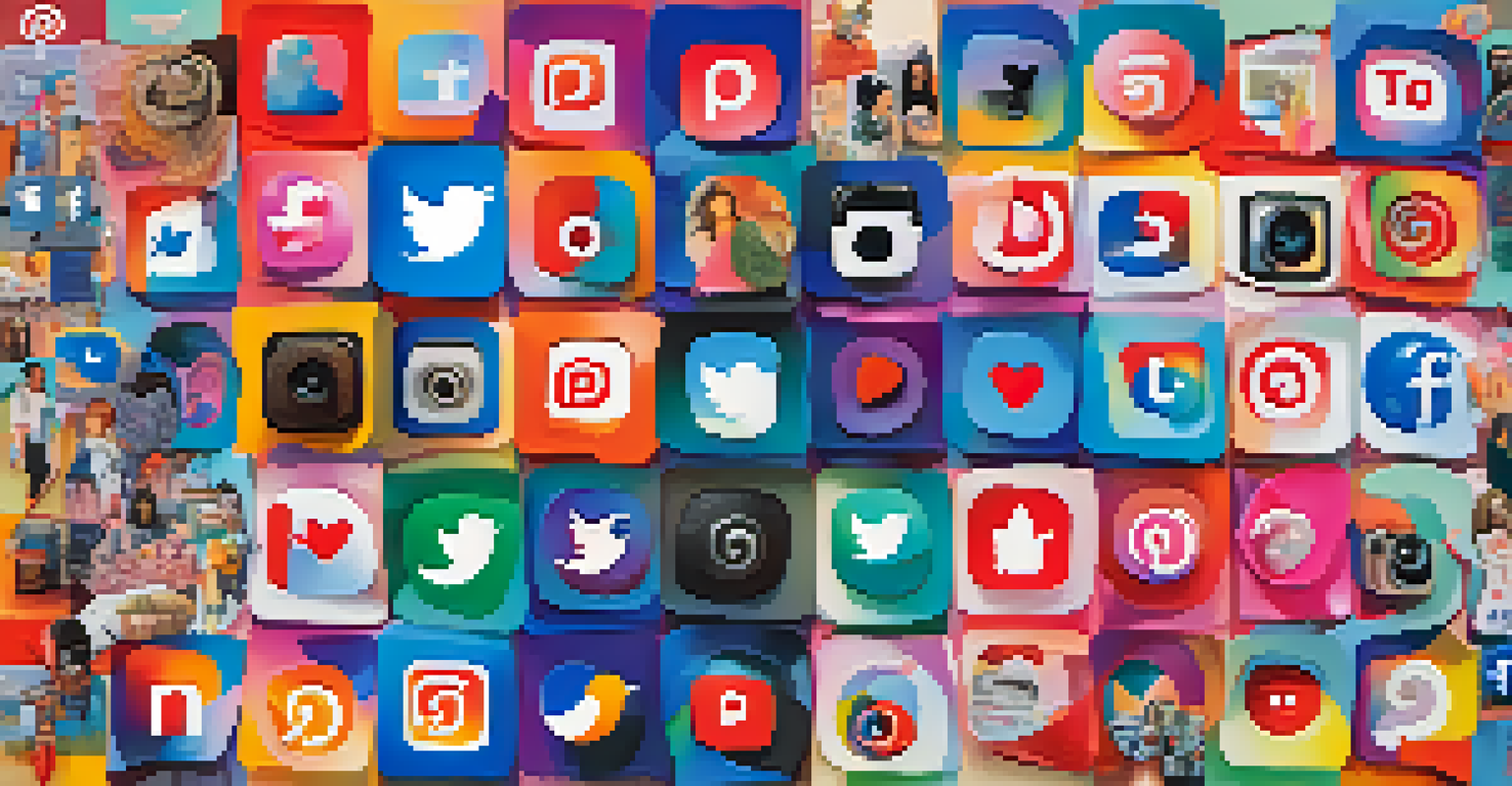The Rise of Digital Art Collectives in the Modern Age

Understanding Digital Art Collectives: A New Era of Collaboration
Digital art collectives are groups of artists who come together to create and promote art in the online space. These collectives often leverage technology to collaborate, share resources, and build a community around their work. By pooling their talents, artists can experiment with new forms of expression and reach wider audiences than they could individually.
Art is not a solitary pursuit; it is a communal experience that fosters connection and collaboration.
The rise of social media and online platforms has made it easier for artists to connect with one another, fostering a sense of community that transcends geographical boundaries. For instance, artists from different parts of the world can collaborate on projects in real-time, leading to innovative and diverse outcomes. This collaborative spirit is at the heart of what makes digital art collectives so appealing today.
In the realm of digital art, collectives can take many forms, from informal groups on social media to more structured organizations. Regardless of their structure, these collectives are redefining how art is created, viewed, and appreciated, making art more accessible and inclusive.
The Impact of Technology on Art Creation and Distribution
Technology has dramatically transformed how art is created and distributed, paving the way for digital art collectives to thrive. Tools like graphic design software, 3D modeling applications, and digital painting programs enable artists to experiment and create in ways that were previously unimaginable. This democratization of tools has lowered the barrier to entry for aspiring artists.

Moreover, platforms like Instagram, Behance, and various NFT marketplaces allow artists to showcase their work to a global audience. This visibility can lead to new opportunities for collaboration and sales, as artists can connect directly with collectors and fans. In essence, technology has not just changed the medium; it has expanded the entire ecosystem surrounding art.
Collaboration Fuels Artistic Growth
Digital art collectives enable artists to pool their talents and resources, fostering innovation and broader audience reach.
As artists band together within collectives, they can share these technological resources, thus enhancing their creative capabilities. For example, one artist may excel in animation while another might be a master of digital painting, allowing them to create unique work that combines their strengths.
Bridging the Gap: How Collectives Promote Emerging Artists
One of the most significant benefits of digital art collectives is their ability to promote emerging artists. Many talented creators struggle to gain visibility in a crowded market, but being part of a collective can help elevate their work. Collectives often have established followings, allowing new artists to tap into a ready-made audience.
Technology enables artists to break down barriers, creating opportunities for collaboration and innovation.
For instance, a collective may organize virtual exhibitions or collaborative projects that highlight the work of its members. This not only showcases the talent within the group but also creates a sense of camaraderie and support among the artists. By working together, they can amplify their voices and reach potential buyers or fans.
Additionally, these collectives often provide mentorship and resources, helping new artists navigate the complexities of the art world. Whether it’s through sharing marketing tips or offering advice on pricing their work, the support system within a collective can be invaluable.
The Role of Social Media in Digital Art Collectives
Social media has become a vital tool for digital art collectives, acting as both a platform for showcasing work and a means of building community. Artists can share their processes, connect with fans, and collaborate on projects through platforms like Twitter, Instagram, and Discord. This engagement fosters a deeper relationship between artists and their audiences.
Moreover, social media allows artists to experiment with their branding and public personas. They can create a cohesive visual identity that resonates with their target audience while promoting their collective as a brand. This strategic approach can significantly enhance their visibility and appeal in the digital art market.
Social Media Enhances Visibility
Platforms like Instagram and Discord help digital art collectives showcase their work, build community, and engage with fans.
Collectives often utilize social media to organize events, such as live painting sessions or Q&A discussions, further engaging their followers. By actively involving their audience, artists can cultivate a loyal fanbase that supports their work and the collective as a whole.
The Economic Benefits of Joining a Collective
Joining a digital art collective can offer significant economic advantages for artists. By collaborating on projects and sharing resources, members can reduce costs related to production, marketing, and distribution. For example, a collective might pool funds to create a high-quality art book or host a virtual exhibition, making it more financially feasible for individual artists.
Additionally, being part of a collective can enhance an artist's credibility. Collectives often have established reputations, which can positively impact the perception of new members. This can lead to increased sales, commissions, and opportunities that may not have been accessible otherwise.
Furthermore, digital art collectives can explore alternative revenue streams, such as merchandise, crowdfunding, or NFTs. By collaborating on these initiatives, artists can diversify their income sources, making their careers more sustainable in the long run.
Challenges Faced by Digital Art Collectives
While digital art collectives offer numerous benefits, they also face challenges that can impact their effectiveness. One common issue is the potential for creative differences among members. Balancing individual artistic visions while maintaining a cohesive collective identity can be tricky, requiring open communication and compromise.
Additionally, the digital landscape is constantly evolving, meaning collectives must adapt to new technologies and trends. This can be daunting, especially for artists who may not be tech-savvy. Staying current requires ongoing learning and flexibility, which can stretch resources and time.
Economic Benefits of Collectives
Joining a collective allows artists to reduce costs, enhance credibility, and explore diverse revenue streams for sustainable careers.
Moreover, as collectives grow, managing the logistics of collaboration becomes more complex. From coordinating schedules to dividing profits, the administrative side of running a collective can become overwhelming. Establishing clear roles and responsibilities can help mitigate these challenges, ensuring that the collective functions smoothly.
The Future of Digital Art Collectives: Trends to Watch
As the digital art landscape continues to evolve, the future of art collectives looks promising. Emerging technologies like virtual reality (VR) and augmented reality (AR) offer exciting new avenues for collaboration and expression. Collectives may leverage these technologies to create immersive experiences that engage audiences in unique ways.
Additionally, the rise of the metaverse presents new opportunities for digital art collectives to showcase their work in virtual spaces. Artists can create galleries and exhibitions that transcend physical limitations, allowing for a more interactive experience for viewers. This shift could redefine how art is consumed and appreciated.

Ultimately, as more artists recognize the benefits of collaboration, we can expect to see an increase in the formation of digital art collectives. This trend not only enriches the artistic community but also enhances the overall cultural landscape, making art more inclusive and accessible to everyone.